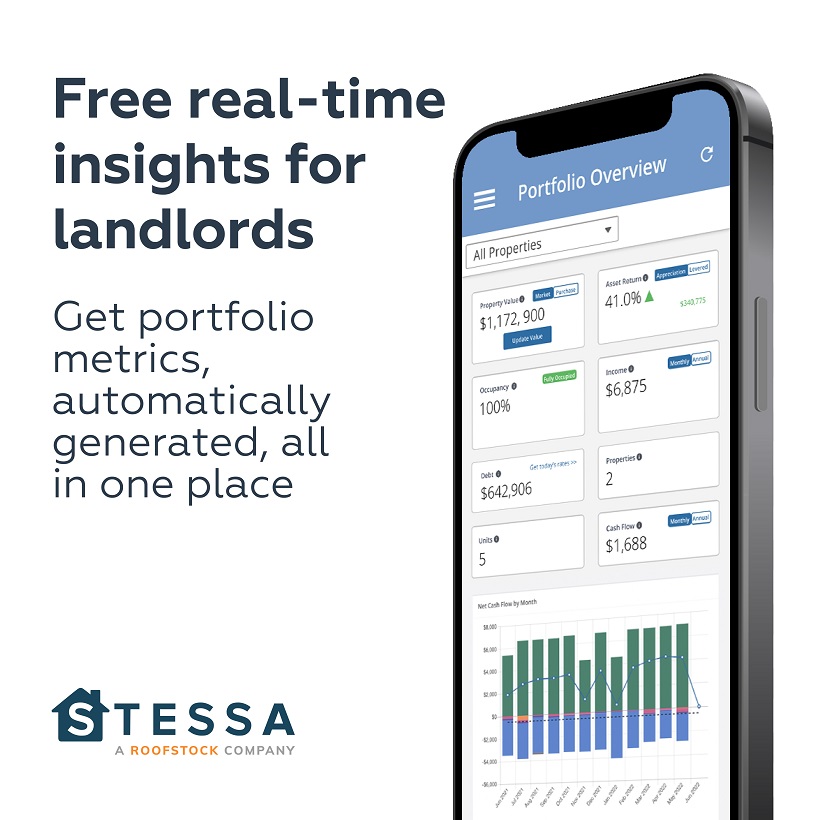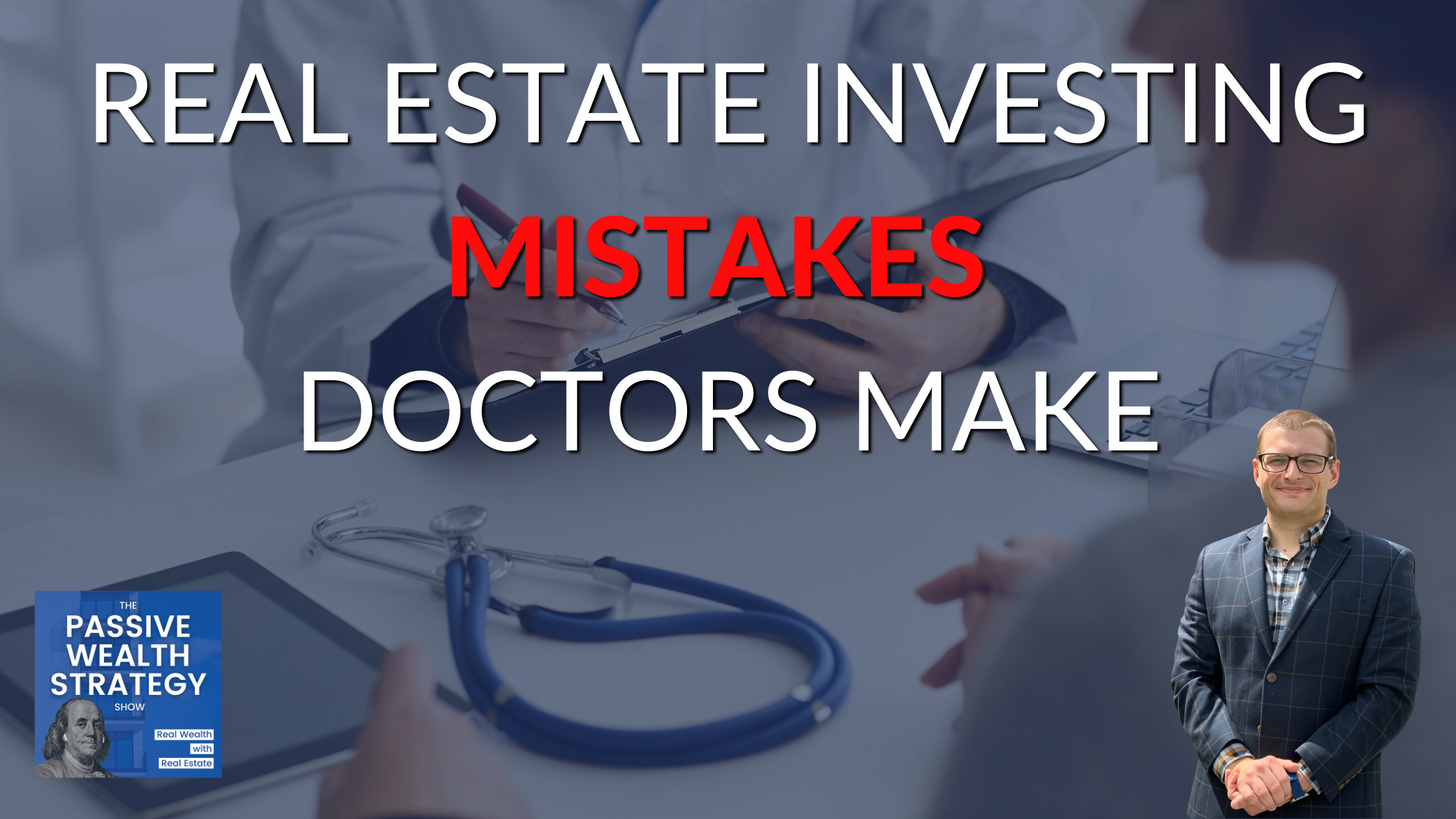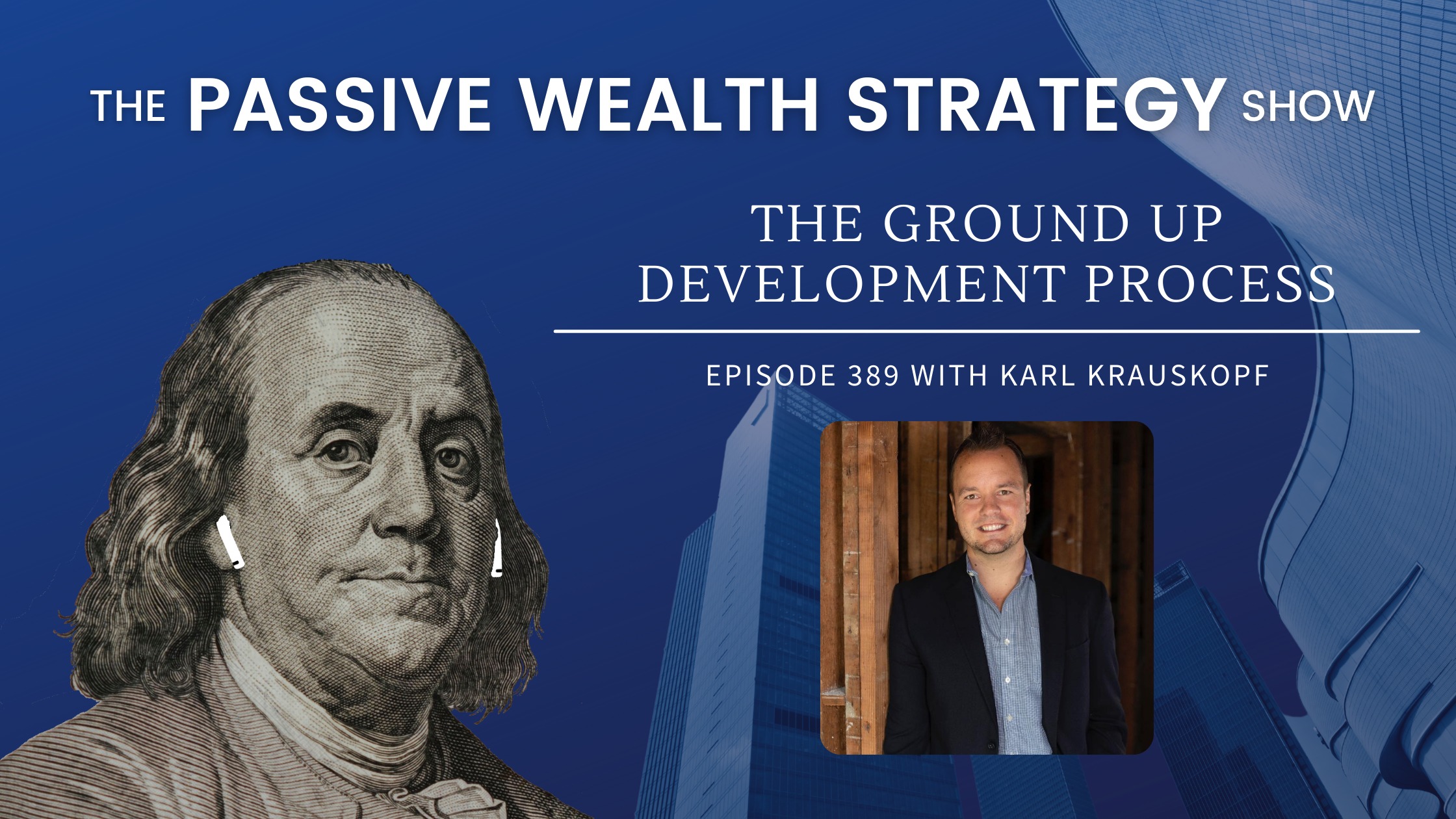
The Ground Up Development Process with Karl Krauskopf
Karl, thank you for joining us today.
My pleasure. Thanks for having me.
I’m going to have a lot of great information for our listeners today. For those out there who don’t know about you and your business, can you tell us about your background and what you are in?
Sure. So my name is Carla cross cough. I live up in Seattle, Washington, and Aurora’s investment group right now is primarily focused on two, I would say two different products.
One is the townhome and apartment development. So think of a ground-up construction where we have options. By a build and sell or buy, build, and rent and hold long-term on those either the townhome or the apartments. And then the other would be the traditional value add apartments. On the latter side, we’re really focused on Sunbelt.
Steady a steady appreciation, steady cashflow on the former we’re really focused on higher appreciation markets like the Northwest and some of the other markets that are really going to focus on appreciation. Great.
And. Just to, I want to continue on the conversation really that we were having before we were hit recording and really dig into townhome development, your experiences there, lessons learned, and all of those kinds of things.
So at a high level, can you get us started and tell us about, know, the types of deals that you do in townhome development. Sure.
So really, again, a lot of them, our experiences up here in Seattle where I’m sure most other markets have a lot of bureaucracy and timing in terms of getting entitlements permitting.
And I would say the average up here for a very low ambitious meaning you’re not pushing on envelopes. You’re not getting variations and codes zoning is about 12 months. So 12 months. Titled entitlements to get permits. And then you’re looking at an additional 12 months plus to get the construction and they’re getting onto whatever your next phase is, whether it’s holding or selling.
So right now we are hyper-focused laser-focused, I would say, on buying straight from developers. The already entitled and permit-ready projects. So that way we can bypass that phase. Obviously, we’re going to be leaving a little bit on the table in terms of, those developers obviously have to make some money on their side of the house, but it’s reducing our exposure to market cycles, long market cycles by being able to get in and get out onto our next strategy within typically again at 10, between 10 and 14.
Okay. Great. So let’s dig into that and how you find those developers and figure out who to work with and what your, screening process is. I’m sure you have some kind of process there on the front end to figure out, what lots to buy, what to invest in, what, and where’s a good opportunity.
So at a high level, how do you get started in picking a developer, picking lots and all of that right in the.
Yeah, absolutely. So in terms of developers, what we’ve got in Seattle is a couple of different things. That’s helpful for identifying those developers. There’s a website out there that shows from a user-friendly perspective where all of the.
Permit approved. And the permit process projects are in the Seattle area. Now I know some of the other cities around it do not necessarily have that, which makes it a little bit more difficult. But in Seattle, what we do, we start off with making and building those relationships based on that user interface, reach out by email, get to know them, and start talking to them about their projects.
Nine times out of this. Our purchase price does not meet whatever their sale price is. Absolutely. They want more, we can’t afford more. And so we part ways on that particular project, but in the one in 10 cases where it does work, we get it under contract, do a little, do some additional due diligence and either continue on and close or for whatever reason, we may have to back out.
Now you mentioned something about due diligence earlier. No. I think one of the things as we continue to evolve and grow as a company is continuing to move that due diligence upstream. So that way we’re able to ask some of the most pertinent questions to qualify these leads in advance of going under contract.
So that way we’re not spending unnecessary time either on, on our side, the developer side, or sometimes if there’s a broker involved on their side as well. So we built out when we’re continuing to build out that due diligence checklist, and it really aims at identifying. Long-term construction requirements, high costs, and construction requirements are two of the biggest examples.
There are street improvement plans and any kind of utility enhancements. So street improvement plans are where we’re extending a, typically some kind of utility, like a water main, a sewer, or even if it’s just increasing the size of the road, doing curb cuts, that kind of stuff. And the difficult part with that.
we’re working with every single municipality in the city, right? From your department of transportation, to fire, to all of the utilities, to the so forth, and so on. So really exposes us even more so to those long market cycles. So we try and really focus on projects that don’t have. Type of work.
So that way again, we can hit our business strategy of getting in, getting out, getting onto the, to strategy, be in that 10 to 14 months.
Okay. Okay. And you mentioned earlier on about when you’re looking at these deals, say nine out of 10, don’t end up panning out because Hey, the developer that wants more money for the lot, then you are going to pay and that’s totally fine.
For those types of deals, is that typically because of. Unreasonable or are those lots going to maybe a more retail type of a person who’s just going to build a house for themselves to live in it, or what’s the typical reason for the disconnect there and your, yeah.
So there’s a couple of reasons I would say on the conservative side, we w when we bank and when we underwrite our exit value, whether it’s on the rental side or on the sales side we don’t a bank, or we don’t.
Appreciation for our sales and our projects. Now that ends up, that does end up ends up leaving us. There are nine to 10 deals that don’t actually pan out. But I feel again in the stage that we’re at. And I don’t want to take on that risk because again sure. We’ve seen crazy spikes and appreciation over this last year.
Sure. We could even underwrite a standard normal appreciation, but then, for the time being, we continue to operate and look at whatever our exit values are based on today’s comparable as either sales or, when we’re underwriting, long-term holds, we’re still doing rescission. Excuse me.
Cap rate regression analysis. We’re adding on 15 basis points for every quarter that we’re exposed to the market. So that way, again, we’re underwriting with conservative metrics and on a conservative basis. So I think that typically that’s, that’s why we’ve heard a lot of what’s your new estimated cost to sell or what’s your rental?
What’s your rental base? Let me go through that. And it’s usually the strong disconnect between what we’re underwriting. And what the developer’s going to be underwriting.
Gotcha. Okay. That makes sense. So now let’s get back to the process. We left it off where we maybe I diverted us a little bit after you get.
Piece of property under contract, you start doing your due diligence. Let’s get back on track there too. I want to end up basically with a finished property that you’re looking to move on from. So once you have the property in a contract, you start your due diligence. Let’s pick it up there.
Yeah. Really on the due diligence side, we’ve got a strong sense, especially with, our background in construction and our partners from a fee builder, or rather a feed developer standpoint, that we’re partnering with developers that have been doing built building these townhomes for.
2030 years. We’re confident in our ability to work with and perform based on their ability to put up continuing to put up structures as they have for the past 20 to 30 years. And so we’ve got a strong sense of the cost of construction. So it’s, the biggest part once we get under contract is just about is two parts, a validating cost of the country.
On the initial underwriting, we’re assuming no. What we’ve seen maybe with some cost inflation, additive. And then yeah that’s been a fun and wild ride this last year and it continues to be lumber. It continues it’s been going back up, which has been painful, but yeah, the next piece, the next phase of the feasibilities is generally speaking our capital raising side where, we solicit or we go to our, we work with our limited partners, limited investors on raising the necessary equity to close on the property.
Okay, great. And that material cost inflation has been obviously really big and there’s also, there’s the cost inflation and also the availability. And then, of course, labor and all these are things that factor into it. How do you deal with all of that variability in terms of, a nuts and bolts sense?
How do you make sense of it? Because that has definitely been a stumbling block for many developers out there.
Yeah, and it continues to be, especially on the show, I’ll take those three verticals, right? Cost of materials, availability of materials, and cost of labor.
So on the first side, the cost of materials, I saw an interesting I had an interesting presentation this last week where a developer, who’s putting up 3000 units across the country a year. He did an incredibly thorough analysis showing that a lot of the cost of material is actually a cost.
It’s a function of the cost of shipping. As opposed to the true actual cost of the material, the cost of shipping is the one that’s driving. The sheer increase in. And I don’t see that getting much better over the very, very short-term. I do absolutely see it getting better by the end of this year.
As state and country lines become a little bit less restrictive I do believe that those prices will come down. However, we do have the terrible humanitarian crisis that’s happening right now that, could to some degree in Wilson to some degree impact cost of gasoline oil, et cetera, which will for the short term, I hope to impact the cost of materials.
I’ll be a through the cost of shipping. Yeah. Delay of materials. It’s real. We are our most recent development. We had window delivery scheduled for six weeks and we just literally got it yesterday at the 13th week. Oh, man. So how do we, how do you manage that? It’s difficult. So there are a couple of ways that we’re considering in the future going forward in the future working with permit sets that are identical from one project to another.
So taking a permit set where the windows are all the same size, everything is the same size that in makeup, it’s just on a different lot. That way we have the option to do bulk buying. So bulk buying is going to give us a couple of different options. It’s going to allow us to control our own supply chain. A little bit better because we can actually bulk buy and hold materials in a warehouse as well as obviously, better pricing.
And I think that’s, that’s an opportunity that we’re going to have over the coming PR in that we’re going to take over the coming 20, 22, just to again, give us better control over our own supply chain, as well as help reduce costs as costs elsewhere. Continue to go up.
And then on the labor side, a labor shortage right now in Seattle, what we’ve been dealing with is concrete strikes since December. Oh, wow. Absolutely. And what does that mean? That means all commercial projects, large commercial projects from a concrete standpoint, it’s come to a screeching halt. So on the midsize where we small and midsize where we’re operating, we’re having we’re strategic.
Working with owner-operators of concrete trucks to be able to service our projects and our needs, which I’ll be, comes at a cost, right? It’s probably about a 15% increase cost on flatwork, which, on a six-unit townhome is going to be. Maybe a $15,000 increase on cost, not terrible, but absolutely something that, we don’t necessarily want to be taking 10,000 bucks.
But if you can, if you consider it from a money cost perspective, if we couldn’t be pouring last time, people were pouring was back in December. And as of right now, that’s what two months ago. And there’s still, no, there’s still no. And insight. So what the concrete strike is it’s a, you the concrete workers are unionized here up in Seattle.
The large firms are the large concrete producers and deliver, and operators are unionized, which is great. But right now management and. Aren’t a dispute and from the market’s perspective we’re suffering. And so we’re going, we’re working with small owner-operators to continue our projects forward.
Once we get this con the concrete strike resolved what’ll end up happening is, The large backlog of getting through those big commercial projects. And so we do have a long tail, probably three to six months after whenever that period after that agreement is finished.
Interesting. So that’s a good example, or I would say maybe a microcosm but in the macro, you have other trades that are involved.
I would imagine that your costs of various other trades have gone up as well. Is it comparable in terms of, 15%? Is it more or less.
No, I would say it’s, I would say it’s on par, it’s probably at, or around the 10% increase on a tree, like apples to apple labor cost, we, I would say 10%, 10% cost inflation on labor cost is absolutely what we’re seeing right now.
And what do we do with that? On continue projects. I’ll talk about current and continue in future projects, we’re underwriting at that higher cost current projects. What are we doing? Thankfully we have a couple of different ways. We have a couple of guaranteed match prices.
So a lump sum at lump sum contracts were, we went into this knowing full well, what the price would be with ours. And, unfortunately at some, some win, some lose in those contracts. And it’s gonna be at the strength of the relationship between the general and the sub to be able to work through those cost increases.
Okay. So to go back to the timeline of one of these deals, I believe we’ve gotten up to the point where you’re raising capital from investors. Once you get the capital problem in parallel, what are you doing with the general contractor, I would assume there’s probably more permitting that needs to happen even after the lot itself is all ready to go.
So what happens then? Let’s push them forward.
Yeah. Good question. So concurrently with the investor side, we’re also getting our master services, our contractor services agreement, all ticked and tied and getting all of that negotiated a lot, typically a lot of that really just boils down to cost.
Terms are pretty standard across the board from a development standpoint, net 30 from a payment perspective how you, how w how we work with change orders, costs, et cetera, communication plans, et cetera, all standard terms. Terms, but, really comes down to the cost.
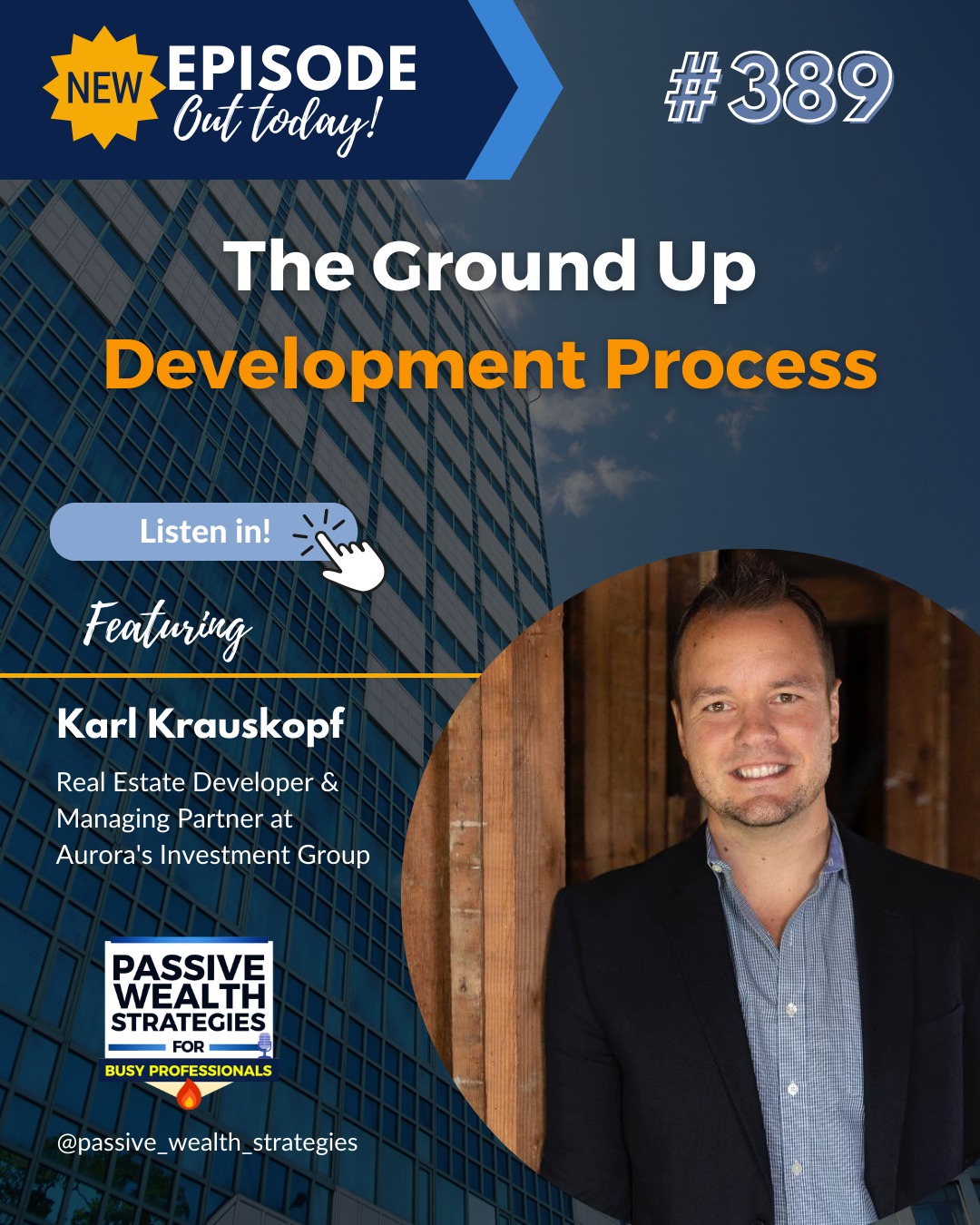
The Ground Up Development Process with Karl Krauskopf
And a lot of what the developer is going to be doing is going out, getting hard bids from their subcontractors, which typically, you know, depending on the size and the scope of the project is about a two to three-week process. So working with them on that concurrently with the contract terms.
So that way, ideally within three at the end of three, or at the end of four weeks, we’ve got our capital raise from our investors our contractor services agreement, all finalized, signed off on, and we’re working through any kind of title exemptions or any complexities outside of that and within the purchase and sale agreement.
So at that point, When do we, when we finally get to, somebody brings out a show. Sticks that shovel in the ground.
How yeah. No. So good question. So day two is, that’s how I always phrase it, right? When when we’re meeting with developers, when we’re meeting with investors is, and that’s why right now we’re really only hyper-focused on those permit-ready and titled projects to where day two, we have mobilized out the excavator and we are digging.
And really, truly that, that, that is the way that it works because we’re closing our closing is contingent on seller pulling and issuing those permits. Getting them ready, having those meetings with the architects on the front end, and getting our pre-construction meetings with the city all done prior to closing.
There’s a period between feasibility and closing where we do all of that stuff. Where it’s okay. Our money has gone hard. Yeah. Our money has gone hard, and we know that we’re going forward with this project, barring any kind of catastrophic, catastrophic event. So we’re holding those pre-construction meetings.
We are, we’re getting the permits polled, we’re getting everything done. So that way, again, the goal is day two to have excavators out there digging and moving earth, and we do that. So that way in a month, we can hit that month, 10 and forth between 10 and 14 timelines. Okay.
So day one is the day that you actually close on the property and day two, right?
Moving forward. Exactly. Gotcha. Okay. So now we’re on day two. Hopefully, you’re not skipping around and skipping too many steps around here. Day two properties getting. What are you, and why are you in management mode? How I assume there’s probably some level of communication with your investors.
What are you doing until you get, until the property’s done, right? What are you up to?
Yeah, absolutely. Good question. So we operate with the developer in the sense that we are working with them, understanding what are their obstacles and what’s going on with them. So that way we’re able to effectively communicate back to our investors, and the construction timeline.
As well as any kind of market updates, how is, how is, how does the market continue to appreciate or to, is it softening what’s going on and keeping all of that in, in the framework of, the initial original investment, the original underwriting. So that was. Again, on these townhome developments, we’re not paying out cash distributions during the life of the project because there’s no cash from operations.
So the way that it’s teed up is, Hey, you’ve invested a hundred thousand dollars assuming it’s a $4 million exit. Now all of a sudden it’s a $4.5 million exit. And how does that impact your initial investment from an underwriting perspective? Obviously, there may be cost increases.
There may be longer hold times. There may be all of this. And so it’s really showing and illustrating and communicating back to the investors. How has, how are all of these changes impacting? Because all of our investors right now are full-time workers, full-time day jobs. We’ve got doctors, lawyers, we’ve got retirees where they don’t necessarily want to, I’ll actually say they don’t actually want to.
Be managing and working with these con with the contractors and the lenders and all that kind of stuff that they want. A quick, simple, succinct communication that says how their investment is performing. And that’s what we give them. And not only is it the communication, but it’s also holding the developers accountable for timelines, and for the budget.
Working with them working with any kind of municipality and or utility company, which by the way, I’ve learned that the most difficult part of the construction is not the construction. And it’s working with the municipalities and the utility companies because it’s out of our control, right?
With subcontractors that are within our control with our crews and our builders. It’s within our control. But when we bring in municipalities like the city or the county or department of transportation or the utility companies, those are all external. All we’re doing is making their jobs more difficult.
And so they see it as an adversarial relationship. And so our job as the management company is to. Yeah, it is to mend those relationships is to make it an easy process between our developer, ourselves, our investors, and those municipalities and the utility companies.
Nice, nice. Yeah. That can really throw a wrench into the works.
I can imagine if a municipality decides they want to, put a pause on things okay. Pushing forward. The property’s getting a bill you’re coming close to. It’s going to be completed. I don’t know. I’m not sure exactly what timeline that is to complete the property in this case, but where do you go from there?
There are the build-to-rent models fairly popular right now. There’s obviously the MLS is insane. Probably not going to lose by selling it to a retail buyer. What are you looking at in terms of an exit strategy?
at the end? Good question. So we always phrase it as we’ve got those exact two and typically the third of a sell some hold some at low leverage.
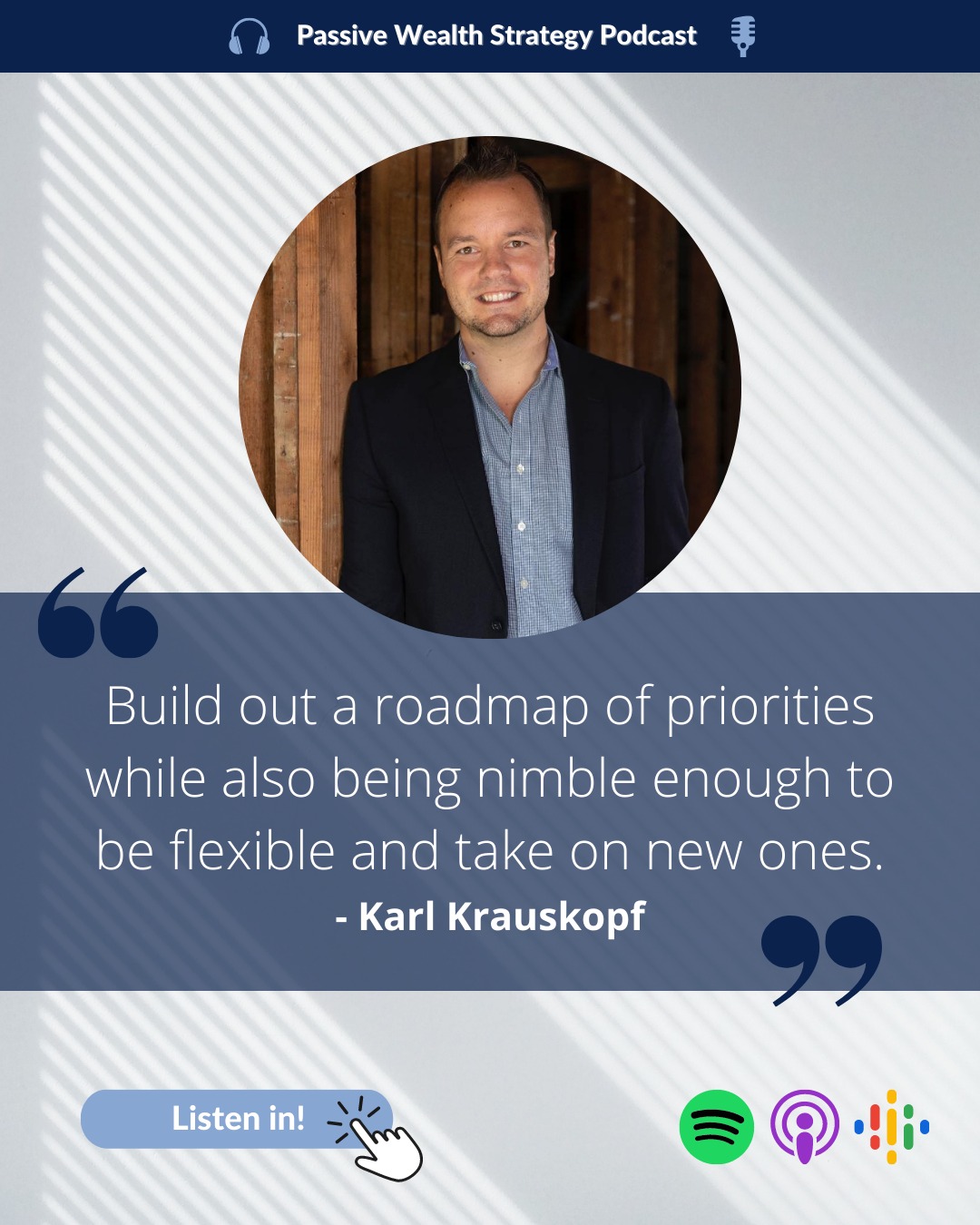
Build out a roadmap of priorities while also being nimble enough to be flexible and take on new ones.
Karl Krauskopf Tweet
Permanent debt position, but the two primary strategies are the build, the rents, and the built to sell. And the chief, I would say a determine of what strategy, what lever we pull is based on the temperature of the market at the time are things selling for. And this is a real number, half-million dollars over asking, or I think Bellevue may hold one of the records of over a million dollars over asking it is insane.
So it depends on the temperature of the market. Absolutely. Or can we perform. Outperform our underwriting to a 10 to 15 to 20% degree, or are we holding true to underwriting based on current market conditions. And so a lot of our investors, are appreciative of our approach in that aspect, because, at the beginning of the project, especially in a market that continues to appreciate like Seattle has and like the rest of the nation has a.
You can certainly appreciate the amount of gain that you get above the original underwriting and in today’s market. And it really, it goes back to what are things selling for at the time? Is there a bidding war? Are there above offer above asking offers? Okay.
Okay. Awesome.
It seems like this market has been very good to real estate developers all, even with all of the problems to have a very strong market on the backend to sell into, which is really what you need. Now. One question I want to ask here before we move on to the three questions I ask every guest at the end of the show, it’s really about.
Going into these deals adequately capitalized. I would imagine there’s a bit of a temptation to manage the amount of money that you raise because Hey, the more money that we raise, ultimately, we get less of a return on that money. If we have too much sitting in the bank, then that impacts our returns from a percentage standpoint.
So how do you manage that mentally? You want to have enough money. You never want to have to go back and say, Hey, I need more money. How do you balance
that? Sure. Good question. Yeah, first off, proud to say that we have not yet had a capital call. Good. That’s fantastic. And nor do we plan on it based on again, conservative underwriting, it’s a tough call, right?
What’s the balance. Do you want? W first of all, say we don’t want a capital call, so we will always re overgraze. Now, what does that do obviously, to your point, our cash or cash on cash? Our IRR typically would be skewed downwards, in a market where costs continued to go up. We’re going to continue to do that.
So typically we’ll raise 10 to 15%, which would calculate out to be a hundred, to maybe $150,000 more for within the operating account in order to cover any kind of costs like that we haven’t had any of those. So its operating account just sits full, but again, we’ve got that opportunity.
We’ve got that option to pull that lever if we need it. Cover the costs to continue the construction.
Yeah. You’d really rather have that money sitting there waiting, doing nothing, and have to go get it in a hurry. Yeah. Wow. Awesome. Really appreciate you walking us through that strategy here today.
Right now, we’re going to take a quick break for our sponsor. All right, Carl, I’ve got three questions. I ask every guest on the show. Are you ready? Yes. Great. First one. What is the best investment you ever made other than in your education?
That’s a tough one. I I would put it as, and I hope this isn’t too cliche or existential, but I would put, in the relationships, investing in relationships and investing in time in others is absolute.
Something that early in my career I took advantage of and didn’t do as well as I intend to do now and continue to do, really what I like to do is sit down and understand somebody and what makes them passionate? What are their life goals and how can I help if I can help to help them to achieve that goal.
Maybe it’s making a connection to somebody that. But it’s, I’m going to do what I can to help them reach that goal. Whether it’s climbing a mountain, I can help with that. Or if it’s creating wealth through passive investing, we can help with that. Again my intent in what I like about investing in relationships and investing in others is the joy that it brings in seeing others reach their goals.
Again, whether it’s monetary existential, or whether it’s something else that really. No, that I can see that they’re passionate about, that their gears are turning, and that I can help with. Nice.
I love that. We had the best investment. Now we’d go to the other side of that coin, the worst investment.
What is the worst investment you ever made?
I would put it not within a real estate frame of mind. I would put it actually financially speaking. I would put it in the sense that, when I, again, when started investing. A couple of decades ago is. Investing in things that I did not understand.
So ETFs mutual funds, where I didn’t do a thorough analysis, a thorough portfolio analysis, and looked at who are the different companies that make up that, that mutual Fonda, who were the owners and who is the leadership of those teams that compromised those companies. I looked at historical trends and assumed that future performance.
Would be based on historical data. And now I ended up doing it, not bad, but looking at it, it was far riskier than anything I’ve done from an investment perspective. Because again, I didn’t know anybody who was making me that money. All I did was assume that past, past performance would be, would continue.
And the takeaway here is, to understand who you’re in bed. I understand who you’re investing with, do your due diligence, and understand how, again, the business plan is, what the communication plan is and how your money is going to stay safe and grow.
Love it. My favorite question here at the end of the show is what is the most important lesson you’ve learned in business and investing?
So I would break that up into two. If you don’t mind. From a business perspective, what I’ve learned in running this business is the most important is building a roadmap of priorities and influencing others. My employees, my partner our stakeholders within the industry. And getting those priorities and focusing our attention on those priorities.
And so it’s, again, building out that roadmap, taking down those priorities while also being nimble enough to be flexible and take on different priorities. Should they. And from an investing standpoint I think the most important part of investing is I go back to due diligence is know what you’re getting into, right?
Either from an investment standpoint or from a sponsored general partner standpoint, do you do due diligence? Know what you’re getting into? And again, just do it, do as much homework as possible, sure. You may miss an opportunity whether, it’s an investment, whether it’s a general partner, or whatever it happens to be, but you can’t do enough due diligence.
What I like about operating in the commercial multi-family space is sellers, and brokers tend to know that we need to be able to do due diligence. So we’re. Sizable feasibility inspection periods without having to negotiate too much. Now in the single-family space, you have to like, it’s incredibly competitive in this, in the single-family space where you’re having to you’re waving every single contingency.
Your money is going hard. You’re putting your firstborn. You’re putting your firstborn down as hard, automatically from day one. And you’re closing in 14 days cash. And if you don’t want, there goes your firstborn and your earnest money. Again, what I like about the commercial multi-family spaces, we’re able to perform that with diligence.
For some reason, one reason or another, we’re not for not giving that option, then it’s not the right buy for us because we’re not going into an investment opportunity that we don’t get to perform, our full list of, as the title, it’s the site, are the permits and plans?
Or our construction plans and costs, et cetera. So I’d say by far due diligence is certainly the most important part of investing that I found. Love it.
Carl, thank you so much for joining us today. Thank you for all the lessons. If folks want to reach out, if they want to get in touch with you, they want to.
Talk with you more about any of these, these topics we’ve discussed today? Where can they track you down?
Sure. So two spots Aurora’s investment group.com that’s Aurora’s investment group.com. Or you can reach out to me directly, Carl at Aurora’s investment group.com. We are on LinkedIn as well as Instagram and Facebook.
Great. Thank you once again for joining us today to everybody out there. Thank you for tuning in. If you’re enjoying the show, please leave us a rating and review on the apple podcast. Five stars. If you don’t mind you guys, I appreciate that. So much that helps other people learn about the show because that helps us rank higher in the apple podcast ecosystem.
And I’m always honest with you guys that gives me a nice little warm and fuzzy feeling because I get this. They you’re engaging with the content and you’re escaping the wall street casino along with us. If you know anyone who could use a little bit more passive wealth in their lives, please share the show with them and bring them into the tribe.
I hope you have a great rest of your day and we’ll talk to you on the next one. Bye. Bye.
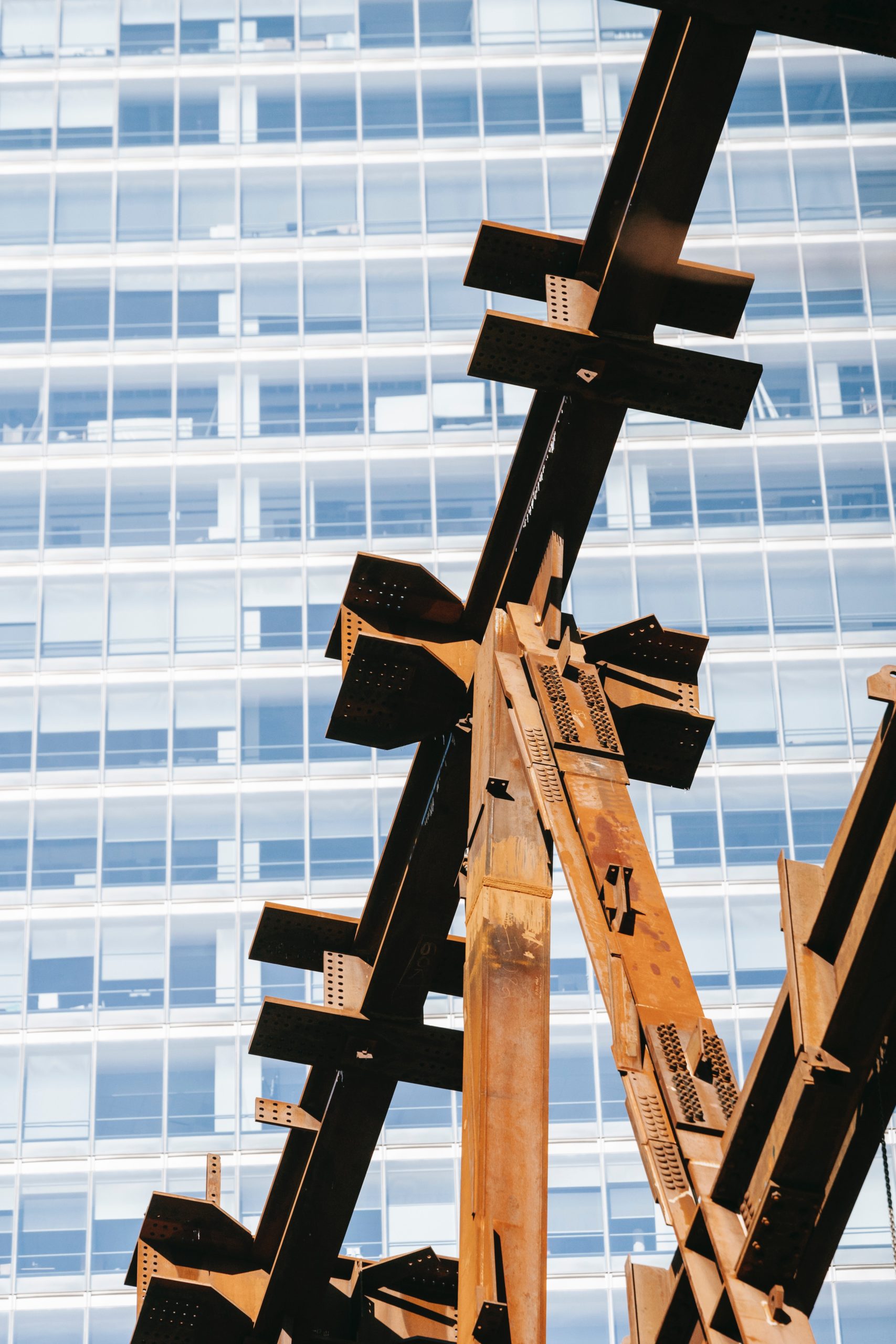
The Ground Up Development Process
About our Guest

Karl Krauskopf
Karl got his start in real estate flipping houses. His business has always focused on acquiring and renovating significantly under market value properties in areas experiencing tremendous market appreciation.
As Karl diversified and scaled his business, real estate development was the natural next step and it is now the primary focus of Auroras Investment Group. Before real estate, Karl obtained his MBA from Palm Beach Atlantic University. He left a position of 10 years (to pursue real estate investment full-time) where he was running strategic planning and business development for a business services healthcare company that grosses $100M annually.
Episode Show Notes
Karl got his start in real estate flipping houses. His business has always focused on acquiring and renovating significantly under market value properties in areas experiencing tremendous market appreciation.
As Karl diversified and scaled his business, real estate development was the natural next step and it is now the primary focus of Auroras Investment Group. Before real estate, Karl obtained his MBA from Palm Beach Atlantic University. He left a position of 10 years (to pursue real estate investment full-time) where he was running strategic planning and business development for a business services healthcare company that grosses $100M annually.
[00:01 – 09:52] Opening Segment
- Get to know Karl Krauskopf
- Why you should bulk buy materials for development projects
- How Aurora Investment Group approaches value add apartment projects
- How to find and work with townhome developers in Seattle
[09:53 – 17:20] The Ground Up Development Process
- Developers Struggle with Cost of Materials
- Karl discusses the strong disconnect between what we’re underwriting and what the developer is going to be underwriting
- Seattle’s concrete strike causes increased costs for small and mid-size projects
[17:21 – 28:50] Pro-Tips for Developers
- Developer gets ready to hit the ground running on new projects
- Real estate developers are seeing strong market conditions, but need to be capable of managing their own money
[28:51 – 38:20] Closing Segment
- Quick break for our sponsors
- The first step to growing your wealth is tracking your wealth, income spending and everything else about your finances, you can start tracking your wealth for free and get six free months of wealth advisor. Learn more about Personal Capital at www.escapingwallstreet.com
- What is the best investment you’ve ever made other than your education?
- Time and relationships
- Karl’s worst investment
- Investing in things he did not understand
- What is the most important lesson you’ve learned in business and investing?
- “Building a roadmap of employees and influencing others”
- “Know what you’re getting into.”
Connect with Karl Krauskopf through [email protected], https://www.aurorasinvestmentgroup.com, Facebook, and LinkedIn.
Invest passively in multiple commercial real estate assets such as apartments, self storage, medical facilities, hotels and more through https://www.passivewealthstrategy.com/crowdstreet/
Participate directly in real estate investment loans on a fractional basis. Go to www.passivewealthstrategy.com/groundfloor/ and get ready to invest on your own terms.
Join our Passive Investor Club for access to passive commercial real estate investment opportunities.
LEAVE A REVIEW + help someone who wants to explode their business growth by sharing this episode or click here to listen to our previous episodes
Tweetable Quotes:
“Investing in relationships and investing in time in others is absolutely something that early in my career, I took advantage of and did not do as well as I intend to do now.” – Karl Krauskopf
“What I like about the commercial multifamily space is we’re able to perform that due diligence.” – Karl Krauskopf





